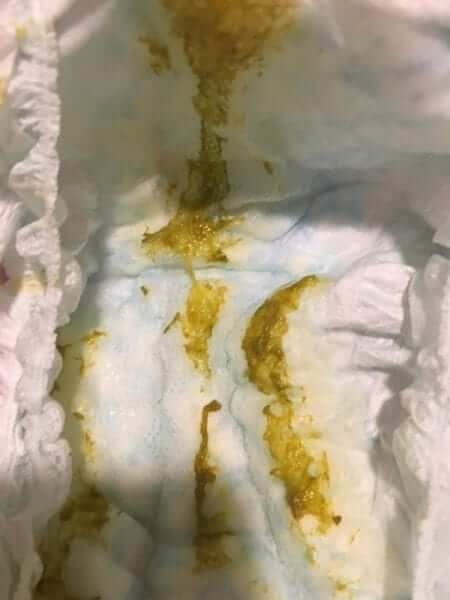
Diarrhea (acute gastroenteritis) in children
One of the most challenging subjects to write about. Where do I begin? This is a very common complaint in pediatric medicine but when is it become important? When is it viral? When is it bacterial? How do you know if your child is dehydrated? A very big subject to talk about.
Luckily for me, I got help from a couple of official guidelines that were published by a few distinguished professional organizations.
Again, the goal of this post is to give parents some ground rules to understand, manage and get better treatment for their child.
Also I published a post that’s related to this post, naming specific pathogens that can cause illness in children. If your child has a positive stool culture/PCR and you want to know more – read about it here.
What is acute gastroenteritis and how common is it?
Gastroenteritis, or as people call it – “stomach flu” is essentially a child with diarrhea. Acute means an illness in a time frame of up to two weeks. This is not a child with a symptoms lasting 3 weeks or chronic diarrhea.
What is the prevalence? This is one of the most common illnesses in children. It may happen up to twice a year in infants younger than 3 years old. So, it is a common cause for illness and even hospitalizations.
What is the definition of diarrhea?
Diarrhea is defined as a decrease in the viscosity of the stool or increased frequency of stools (relative to the child’s normal state).
Another definition – three of more loose stools a day.
What about other symptoms? Do you have to have fever or vomiting?
Sometimes there is fever, low or high. Sometimes there isn’t.
Vomiting? Sometimes the start of acute gastroenteritis is with vomiting, and only later diarrhea follows. What’s important to understand is that it is not necessary to have additional symptoms to define it as gastroenteritis.
What if the child has only vomiting?
Well this is important. Take notice.
It is true that the start of acute gastroenteritis (diarrhea) is sometimes with vomiting alone. But, a child with only vomiting, with loose or normal stools, with or without fever, should be examined by a pediatrician.
Vomiting can conceal diseases that pediatricians are not fond of, such as – head contusion, intestinal obstruction, severe infection and more. Pediatricians ‘love’ children who vomits and suffer from diarrhea more than children who just vomit.
What causes diarrhea (acute gastroenteritis)?
Mainly, viruses, bacteria and parasites.
In term of viruses – Rotavirus was the most common cause for diarrhea in young children before the vaccine came to our lives. Rotavirus usually causes vomiting as well as diarrhea, and was a major cause of dehydration in children. Read more here about rotavirus and its vaccination. In the past years Norovirus replaced Rotavirus as the more common pathogen. However, there are a lot of other viruses that cause diarrhea in children.
When it comes to bacteria, we should mention these three pathogens (though they are not the only ones):
1- Campylobacter Jejuni: a very common pathogen
2- Shigella: there are a number of strains that cause diarrhea in children and adults.
3- Salmonella: decreased prevalence in the past years but still pretty common.
In terms of semantics, you can call a diarrhea with a bacterial cause – bacterial diarrhea or bacterial colitis or dysentery.
In some parts of the world, parasites are also common cause of acute gastroenteritis in children.
Can you distinguish between the different causes of acute gastroenteritis in children?
Yes and no.
Signs like high fever, blood or mucus in the stool (as opposed to just watery diarrhea), and abdominal pain are more related to bacterial pathogens.
Age is also a clue. A one year old child with watery diarrhea is more likely to contract a viral pathogen in kindergarten, than a 15 years old teenager. Of course this is not always the case, but it is a clue.
So the most important fact to remember – the presence of blood or mucus in the stools. Watery or bloody diarrhea mostly indicates a viral pathogen. For those of you with a strong stomach, see the picture at the end of the post.
How can you prevent gastroenteritis in children?
A few ideas:
Vaccines – in many countries, Rotavirus vaccine is a part of the routine vaccination plan for at least 10 years now. In most places, it is given at 2, 4, 6 months. Rotavirus was the most common cause for diarrhea before the vaccine was developed. The vaccine lowered the prevalence greatly.
Breastfeeding as a main contributor to the child’s nutrition lowers gastroenteritis in children. On the importance of breastfeeding, read more here.
Staying in daycare is also associated with higher prevalence of diarrhea in children.
When to go see a pediatrician?
Again, it is hard to give clear signs and symptoms. In any case you are not sure – go see a physician. These are the main focal points to know –
A baby younger than 2 months with diarrhea must be examined by a physician.
Repeated vomiting – as mentioned before.
A high number of stools per day – in the official guidelines it says over 8 stools a day, mainly in large volume. The main concern is of course – dehydration.
A child with a background illness – a significant illness puts the child in risk for dehydration. This is why these children need to be examined promptly.
Signs of dehydration – read about it ahead.
What’s important to know about dehydration in children?
Again, a very difficult question to answer. Here are a few points –
1- The younger the child, the higher the risk for dehydration. A 5 months old child with vomiting and 6 loose stools is not the same as a 5 years old with the same amount of stools and vomiting. The younger the child, the chance is higher for him to get dehydrated, and the need for a prompt medical evaluation is more important.
2- The amount of vomiting and stools – although I have seen children with severe dehydration after only 3 loose stools and a little vomiting, it is clear that the risk for dehydration is higher when the number of stools and vomiting is higher.
3- Vomiting? Diarrhea? Vomiting and diarrhea? Notice the difference. A child that vomits can’t drink anything and can get dehydrated faster. A child with just diarrhea can drink and avoid dehydration.
4- Does the child drinks or eats? In addition to losing water in vomiting and loose stools, you need to pay attention and see if the child eats anything. If a child drank chicken soup and ate a bit of candy, the chances that he is dehydrated are very low as opposed to a child who didn’t eat anything.
5- Sugar and salt – dehydrated children tends to by hypoglycemic and have an abnormal levels of electrolytes in their body. As you will see ahead, you should concentrate on giving them sugar and salt as part of the treatment.
What are the signs in physical examination that can indicate dehydration in children?
These are the most important signs:
Weight loss –relevant only for young children, since we usually have their recent weight, and for those with a weight at home.
Prolonged capillary filling time – when the child’s hand is on the height of the heart, press on one of the fingertips. The tip will go pale and then return to the normal color in about 3 seconds. If the time is longer than that, it could possibly indicate the child is dehydrated.
Decreased skin turgor – pull the side of the lower part of the abdomen, on the level of the umbilicus. When you leave the pulled skin, it needs to return to its normal state quickly. If it doesn’t (similar to elderly people skin, which losses its elasticity) – this means the child may be dehydrated.
Decreased urinary output – a child that gives enough urine is usually not dehydrated. Having said that, this statement could be false for young babies who do not concentrate their urine properly and can still urinate even though they are dehydrated. Note that sometimes it is difficult to know if a child is urinating, if he still uses a diaper (since the loose stools and urine both looks very watery).
Additional signs may be irregular breaths, cold extremities, weak pulse, dry mucus membranes, sunken eyes, lack of tears and an overall poor general state.
Do you have to perform blood test when suspecting dehydration or gastroenteritis?
An examination by a skilled physician is more important in my opinion, than any blood test. In a case the doctor will suspect bacterial infection he may ask for a stool culture (or a stool PCR test). In a case of a child with suspected dehydration he can recommend a blood test to check for the glucose level, electrolytes and kidney functions.
What is the treatment for children with diarrhea?
There are a few things to do, to decrease the child’s suffering and minimize the chance for hospitalization –
Lowering the fever – if the child has high fever, there is room for treatment. Remember that in a child with diarrhea that drinks less, it is preferable to use paracetamol and not ibuprofen.
Stopping the vomiting using medication – less common in children.
Stopping the diarrhea using medication – less common in children.
Probiotics – there are a few bacterial strains proven effective in improving diarrhea symptoms in children, but the commercial products sold have different strains of bacteria and different concentration of bacteria. At this point I do not recommend using probiotics as a routine for children with diarrhea.
Nutrition – in most children there is no need in changing formula in the first few days of the disease. In children who has diarrhea for more than 5 days, and in those where the symptoms resolved and then starts again, there is room for avoiding lactose for a short time. Every formula brand has lactose-free formulas (this doesn’t mean necessarily a soy-based formula).
I did not see any advantage to any commercial products sold in this regard. I recommend treating your child (as you will see ahead) with fluid and electrolytes replacement and not to be tempted in purchasing different products.
How to administer fluids and electrolytes to a child with diarrhea?
Let me tell you a story.
The cholera pandemic (unstoppable watery diarrhea leading to a severe dehydration and even death), occurred in 1971 in a refugee camp in Bangladesh. Due to shortage in supplies (including IV fluid solution), one of the local doctors created a solution that could be used orally, containing water, sugar and salt. The death percentages in his camp were lower than in any other camp. Since then, this solution has been used around the world and has saved the lives of millions, especially in developing countries.
This solution is called “Oral rehydration solution” or in short – ORS. The secret here is with replacement of fluids, salts and sugar to a child with diarrhea. The goal is of course to prevent dehydration and the need for intra-venues fluids.
There are ORS ready to use or in a powder form. The dosage needs to be determined by the physician according to the dehydration level. For example, in a child with a mild dehydration it is customary to give in the first 4 hours 50 ml per every kilogram of body weight and then to give 10 ml per every kilogram of body weight for every loose stool. After that, return slowly to regular meals and nutrition.
In children who vomit, you should administer ORS (or any other sweet liquid) in small doses of 5 ml every few minutes. Giving larger doses can lead to additional vomiting.
Not everybody wants to go to the pharmacy to buy ORS, so my recommendation, which is just as practical in a child with diarrhea with or without vomiting, is to give them something sweet to drink and something salty to eat.
What to do with a child that suffers from acute gastroenteritis, in term of drinking?
A child that vomits – needs something sweet. This can be a sweet juice, candy or a Popsicle. Give little doses every few minutes to avoid increased vomiting.
A child that has loose stools – needs salt. Give him some pretzels, or any other snack that has a lot of salt. The best thing to give to a child – chicken soup.
This means that the classic combination of juice and pretzels are the best thing to give to a child, in home conditions.
What about antibiotics?
In a diarrhea with a viral pathogen there is no need for antibiotics.
Antibiotics need to be given to children with bacterial diarrhea, and even then it is not recommended for everyone.
It’s important to understand, that a doctor is standing in front of a mother and a child with gastroenteritis, and needs to decide whether to give antibiotics, whether to send or not to send stool samples, which can take days to give you answers.
So in that meeting with the doctor, you should notice if there is high fever, abdominal pain, and the most important fact – whether there is blood or mucus in the stools. If you see their presence in the diaper before going to the doctor, feel free to take pictures and show to the doctor. If the doctor will suspect bacterial infection he can recommend starting antibiotics right away or taking stool cultures and waiting for the results.
Notice the nuances between different bacteria –
Campylobacter – a short antibiotic treatment will shorten the disease duration and will lower the chance of spreading the infection in day cares (if given early enough). Azithromycin is the drug of choice.
Shigella – treatment will shorten disease duration significantly. In most places, Azithromycin is the drug of choice, and even though the text books say 5 days of treatment, in most cases 3 days will be enough. If the culture comes back and the child is still ill and did not start treatment, you can give antibiotic course adjusted to the bacteria antibiotic sensitivity (and try a drug that’s a little less broad spectrum than Azithromycin).
Salmonella – that’s a little confusing. On one hand, treatment can elongate the carrier state of the disease and therefor recommended only for babies younger than 3 months or for children with background illnesses. On the other hand – treating salmonella will improve the overall state of the child and will prevent complications. There are different opinions regarding treatment in a child that still has diarrhea or fever. I leave that for the doctors’ consideration. When deciding to treat, the drug of choice is again, Azithromycin. Read more on Salmonella management in this dedicated chapter.
In conclusion – I hope you understand that the drug of choice for dysentery in children (bacterial gastroenteritis) is Azithromycin (read more here).
What about diaper rash in babies with diarrhea?
In babies, diarrhea can be accompanied with red and tender skin in the buttocks area. It can also develop into a bad diaper rash with a secondary candida infection. You can see some pictures and read more about it here.
When can a child with diarrhea return to kindergarten?
These are the children who cannot return to kindergarten:
A child that vomits – you can’t send a child to kindergarten if he vomited 2 times or more in the last 24 hours, unless a doctor decide there is no infectious reason for the vomiting and his overall state is reasonable enough.
Diarrhea – you can’t send a child with diarrhea in these cases:
– 2 or more loose stools a day, especially if there’s mucus or blood (which could indicate a bacterial infection).
– In most places, in cases of identification of shigella, campylobacter, non-typi salmonella, rota or clostridium, the child can return to school 24 hours after the last loose stool.
– In case of shigella or campylobacter it is recommended that the child return after a good antibiotic treatment of at least 2 days before returning.
– Other strange bacteria such as E.coli 0157:H7 or Typhi-salmonella are a bit more complex, and require a few negative cultures before returning to kindergarten.
For conclusion – I’m happy I wrote this post. In this post there are a few good clinical tips that can give parents a better sense on how to treat their children.
GOOD LUCK!
Mucoid stool

For comments and questions, please register
